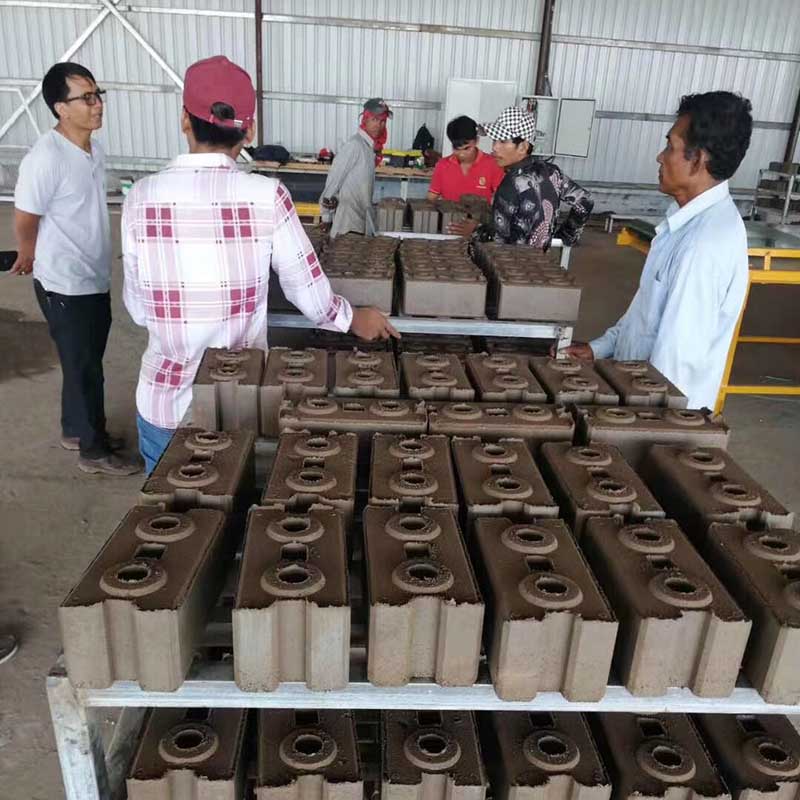
In the dynamic realm of construction, the last few years have witnessed a notable surge in the application and development of brick-making machines.
These versatile tools, central to modern construction, have undergone significant advancements, reshaping the landscape of the industry.
This comprehensive exploration delves into the recent applications, innovations, and the indispensable role played by brick-making machines in the architectural evolution of today.
The Evolution and Applications of Brick-Making Machines in Recent Years
The Resurgence of Brick-Making Machines: A Recent History
In recent years, the construction industry has experienced a resurgence in the utilization of brick-making machines.
This resurgence can be attributed to a confluence of factors, including technological advancements, increased focus on sustainable practices, and the growing demand for efficient and cost-effective building solutions.
- Technological Advancements: Recent years have witnessed notable technological strides in the design and functionality of brick-making machines.
- Automation has become more sophisticated, ensuring precise and consistent brick production. Enhanced control systems and integrated sensors contribute to increased efficiency and quality output.
- Sustainability Drive: The global emphasis on sustainability has driven innovations in the construction sector.
- Brick-making machines have adapted to this trend by incorporating eco-friendly features.
- Energy-efficient processes, the use of recycled materials, and reduced emissions contribute to more sustainable brick production.
- Demand for Efficiency: The growing demand for efficient construction solutions has propelled the resurgence of brick-making machines.
- Their ability to produce a large volume of bricks with minimal manual labor aligns with the industry’s need for streamlined and time-efficient building processes.
Applications Across Diverse Sectors: From Housing to Infrastructure
Brick-making machines have found applications across a spectrum of construction sectors, demonstrating their versatility and adaptability to various project requirements.
- Residential Construction: In the residential sector, brick-making machines play a pivotal role in constructing homes efficiently and cost-effectively.
- The ability to produce uniform and high-quality bricks contributes to the structural integrity and aesthetic appeal of residential structures.
- Commercial and Industrial Developments: Brick-making machines are integral to the construction of commercial and industrial developments.
- Their efficiency and scalability make them suitable for projects of varying scales, ensuring the timely completion of structures such as warehouses, factories, and office complexes.
- Infrastructure Projects: The application of brick-making machines extends to infrastructure projects, including the construction of roads, bridges, and public facilities.
- Their adaptability to diverse construction needs makes them indispensable for shaping the infrastructure that underpins modern societies.
Innovations Driving the Future of Brick-Making Machines
As the demand for sustainable and efficient construction practices continues to grow, innovations in brick-making machines are poised to shape the future of the industry.
- Smart Technologies Integration: The integration of smart technologies is a notable trend in recent developments. Brick-making machines equipped with advanced sensors and data analytics enhance operational efficiency, monitor performance, and enable predictive maintenance, reducing downtime and optimizing production.
- Modular and Customizable Designs: Recent innovations focus on the modular and customizable design of brick-making machines.
- This allows manufacturers to tailor machines to specific project requirements, providing builders with the flexibility to produce bricks of varying sizes, shapes, and compositions.
- Hybrid and Sustainable Technologies: The incorporation of hybrid and sustainable technologies is gaining traction. Hybrid brick-making machines, combining traditional and renewable energy sources, contribute to reduced environmental impact. Additionally, the use of alternative materials, such as recycled aggregates, aligns with the industry’s push for sustainability.

The Imperative Role of Brick-Making Machines in Modern Construction
In the contemporary construction landscape, the role of brick-making machines is indispensable.
Their significance goes beyond mere efficiency; they represent a cornerstone in achieving sustainable, cost-effective, and aesthetically pleasing building solutions.
- Efficiency and Productivity: Brick-making machines remain at the forefront of enhancing efficiency and productivity in construction.
- Their automated processes significantly reduce the need for manual labor, accelerating project timelines and minimizing costs.
- Quality and Consistency: The precision and consistency achieved by brick-making machines contribute to the production of bricks with superior quality.
- This not only ensures the structural integrity of buildings but also enhances the overall aesthetic appeal.
- Economic Advantages: The economic advantages of using brick-making machines are substantial.
- By streamlining the production process, these machines reduce labor costs and material wastage, making brick construction an economically viable choice for builders and developers.
Challenges and Future Prospects: Navigating the Path Forward
Despite the advancements, challenges persist in the realm of brick-making machines.
Addressing these challenges and charting a path forward involve a combination of technological innovation, sustainable practices, and collaborative efforts within the construction industry.
- Environmental Concerns: The environmental impact of traditional brick production, including the energy-intensive process of firing clay bricks, remains a challenge.
- Ongoing research and development are essential to explore alternative, more sustainable production methods and materials.
- Collaboration for Innovation: Collaboration among stakeholders in the construction industry is crucial for fostering innovation.
- Manufacturers, builders, and policymakers must work collaboratively to address challenges, share best practices, and drive the continued evolution of brick-making machines.
- Educating and Training the Workforce: The widespread adoption of brick-making machines necessitates a skilled workforce capable of operating and maintaining these advanced technologies. Investing in education and training programs ensures that the industry has a proficient workforce equipped to harness the full potential of brick-making machines.

Conclusion: Paving the Future with Bricks of Innovation
In conclusion, the recent resurgence in the application and development of brick-making machines marks a transformative period in the construction industry. From technological advancements to sustainable practices, these machines are shaping the future of building.
Their role in achieving efficiency, quality, and economic viability positions them as indispensable tools in the architect’s arsenal.
As the industry navigates challenges and embraces innovations, brick-making machines stand as the architects of a resilient, sustainable, and aesthetically pleasing future.
